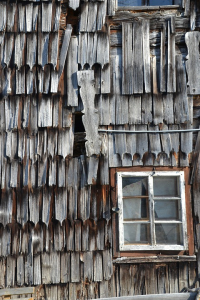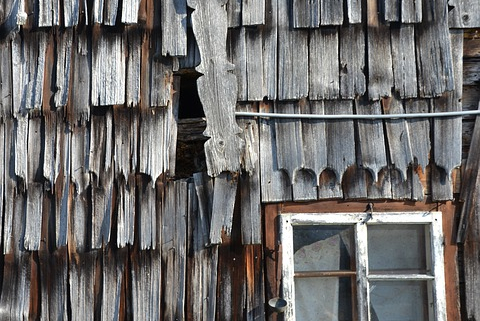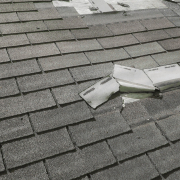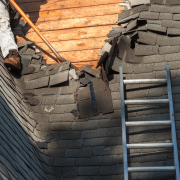Roof Shingles Flapping in Wind
Roof Shingles Flapping in Wind
Roof shingles are an important structure responsible for protecting your property from rain, snow, hail, strong winds, and debris carried with it. However, these shingles also take the hit every single time harsh weather conditions affect your area. While your shingles may be able to keep your home in sound condition, you’ll notice that eventually, the roof itself will show some major signs of damage. When your roof shingles start flapping in the wing, this is a sign that your roof has probably taken in much damage over time and are now susceptible to the harsh effects of horizontally-propelled winds and rain which can usually happen during storms.
Before this happens, it is best to set up preventive measures to avoid having to repair damages. However, repair and roof replacement is inevitable. The best way to prevent it, however, is to do regular maintenance checks on your roof, especially
after storms, strong winds, snowfall, or other events that could potentially damage your roof. This will help you and your roofer identify and fix minor damage
s and prevent them from turning into larger problems.
Aside from prevention, you will also have to first identify the tell-tale signs of wind damage and the long-term effects of it.

How to Spot Wind Damage on Roof Shingles
The first thing to look out for is any sign of loose nailings. These are the primary reason to why your roof shingles are flapping. When shingles are not nailed down securely, they are bound to loosen even further, making it easy to spot a shingle flapping. If not fixed soon, the shingles will likely fall off. Along with this, improper installation can also lead to water leaks because water can easily seep down into the underside and damage the roof.
An even more obvious sign that your roof has taken a major hit is when you start to see shingles missing. During high winds and updrafts, any roof shingles that aren’t installed securely will likely be wiped away by the wind. Broken and missing shingles are easy to spot and can be replaced by a roofer. However, aside from just replacing the shingles, it is important to also have the surrounding area checked. If these spots have been left barren for a while, there is a high chance that rain water and other things have seeped into the edges of the surrounding shingles. This could potentially damage the rest of the roof.
Flapping shingles are harder to spot and fix than missing shingles since they are still in place, but when subjected to high winds, they will flap and settle back down. When shingles start to flap, this is often caused by loose nails or damaged shingles.
What are the Long-term Effects of Wind Damage?
When you start noticing these signs of wind damage, you might not be alarmed by it. Most people don’t see it as a major problem. However, when damage is not addressed as soon as possible, it could end up damaging your roof along with the rest of your home’s structure.
When you have flapping shingles, which turn into missing shingles over time, you are bound to experience roof leaks and ceiling stains. Flapping shingles can also inadvertently damage your roof by creating holes on the roof sheathing that is exposed to the flapping shingle. Rood leaks end up creating even more moisture inside the roof’s interior, causing even more damage over time.
When moisture starts to buildup inside the roof, other things start to grow as well. Mold and mildew also start to form and when this happens, further fungal and organic growth will start to grow inside the foundation of your roof, ceiling, and home. This becomes a growing problem that could affect hard to reach interiors where you would have to tear off the whole roof and ceiling to thoroughly assess damage and make necessary repairs. If you do begin to spot any fungal growth on your roof or any part of your property, it is best to contact a skilled roofer or contractor to address the problem.
Overall, any assessments, repairs, or replacements necessary for your roofing caused by wind or water damage can be done by our team of experts at Waddle Exteriors. The best step towards a long-lasting roof is to have a professional roofing contractor do an extensive inspection of your roof because, oftentimes, damages are quite subtle and cannot be spotted easily.
Related Articles







